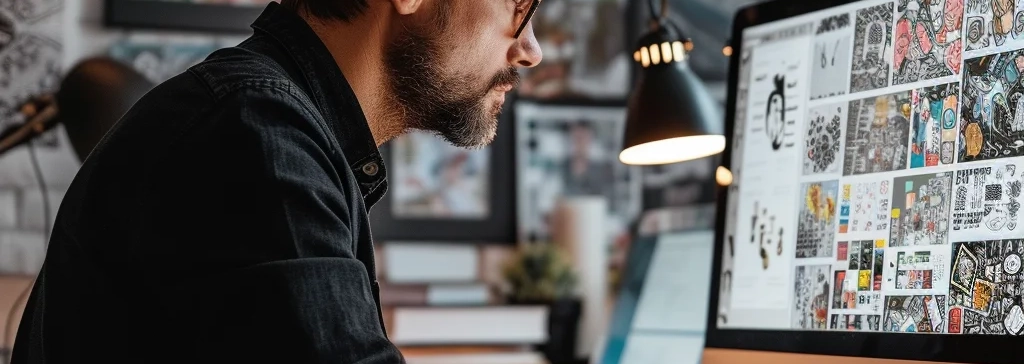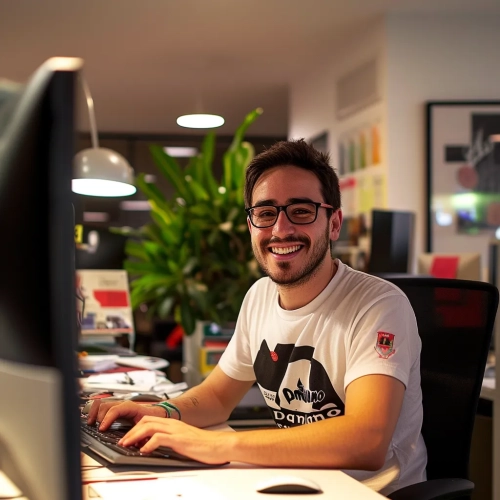


Graphic designers translate ideas and messages into images. After analysing the customer's request to understand their objectives and expectations, they develop visual concepts that respect the aesthetic aspect of the desired message. To do this, they create a graphic charter with colours, typefaces and visual elements. These designs are applied to a variety of media, both printed (posters, packaging, magazines) and digital (websites, applications).
In a large advertising agency, they concentrate on the conceptual creation phase, whereas in a small agency they are involved in all stages of production, from design to printing.
This job belongs to the field of digital marketing.
"For a fluid and intuitive experience, you first need to ask yourself the (right) questions and do some research. What is the purpose of the site/application? Who uses it? When is it used? On what device?"
Sylvere M - UI/UX designer at Inforca's digital agency.









Graphic designers are comfortable using DTP (Desktop Publishing) software such as Illustrator, Photoshop, InDesign, Figma or QuarkXPress. They have an excellent understanding of the language of colour and typography to create harmonious designs. Drawing remains a basic skill, enabling them to produce sketches and designs. Knowledge of 2D or 3D animation is appreciated.
In addition to these skills, fluency in English is frequently required. This makes it easier to access documentation, often in English, and to work with international clients.
Graphic designers are team players on a daily basis. They work with developers, the tech lead and the digital project manager to identify consumer expectations and uses. Their communication skills make it easier to talk to customers, so they can defend themselves and explain projects convincingly.
You need to be open-minded, curious and highly adaptable to deal with a variety of subjects and contexts. A good general knowledge is an asset: it feeds inspiration and enriches the creative process. A graphic designer is creative, has a strong artistic identity and is capable of coming up with original designs.
Many higher education institutions offer courses from Bac+3 to Bac+5, including the prestigious ENSAD, Estienne and Gobelins schools.
The DN MADE (Diplôme National des Métiers d'Art et du Design) offers specialisations in graphic design, digital design and social innovation. They enable students to learn classic and modern techniques, including DTP. Some students go on to study for the DNA (Diplôme National d'Art) with options in art, communication or design.
Graphic designers can work as salaried employees in specialist companies such as design studios, publishing houses or design, advertising and communications agencies. They are in demand in a variety of sectors, including the press, mass retail, multimedia, video games, the automotive industry, sport and luxury goods.
With experience and a portfolio (collection of personal work) to back it up, you can move up to project manager, art director or Lead UX/UI Designer. Graphic designers can also specialise in UX design, poster design, typography, etc. Eventually, they may set up their own company or go freelance.
